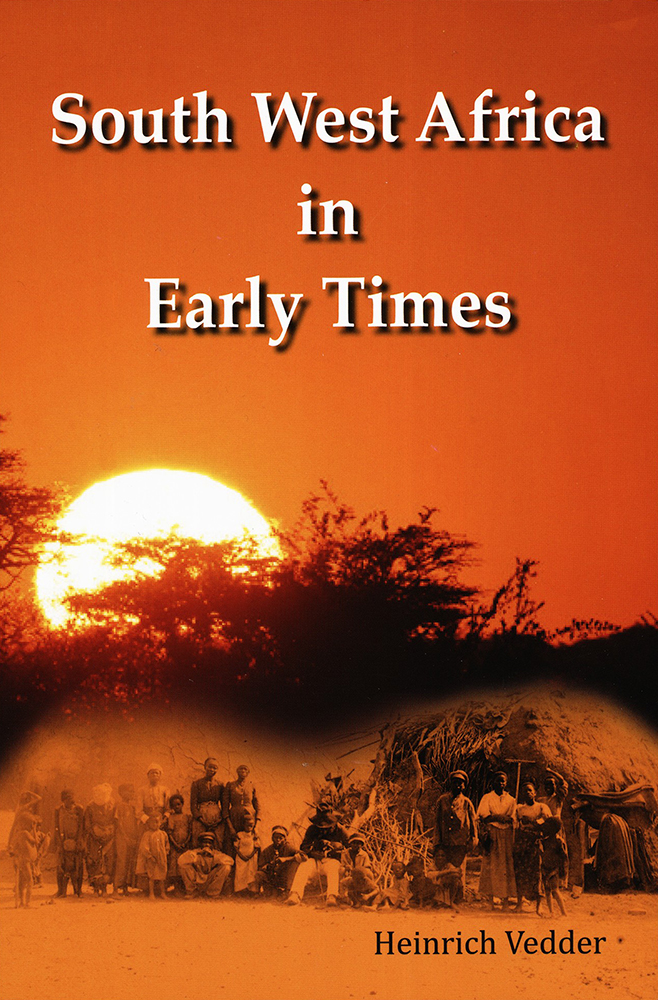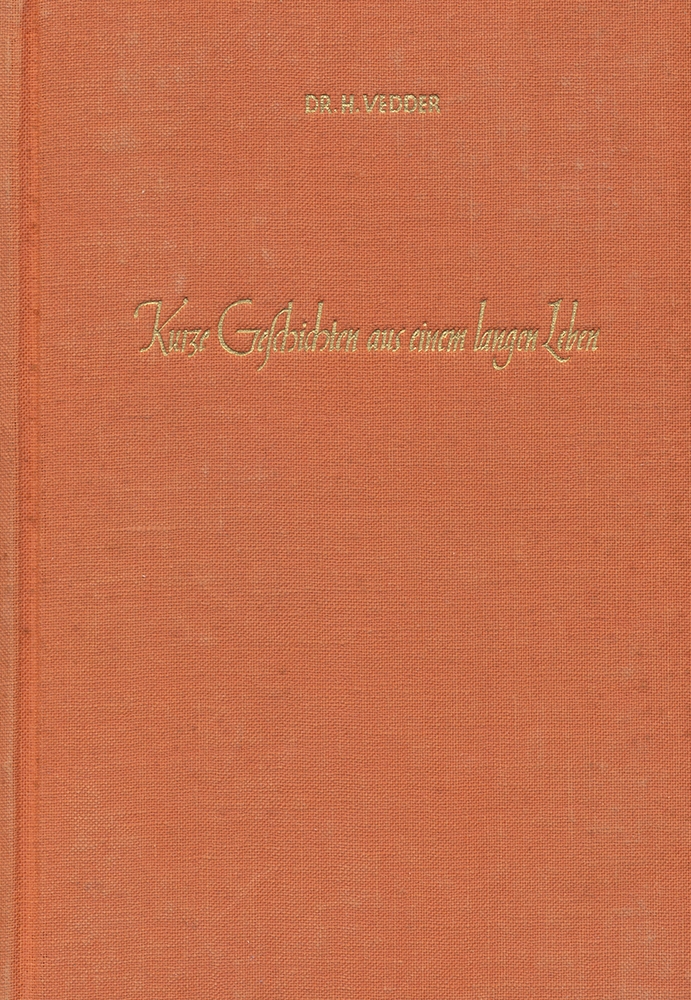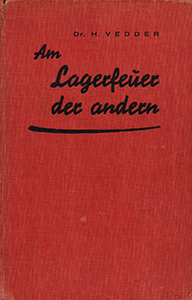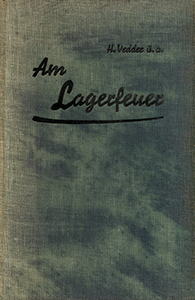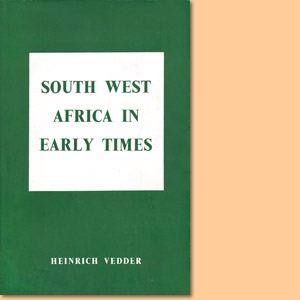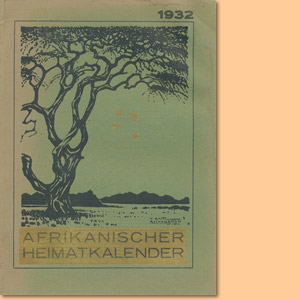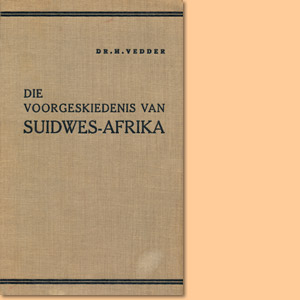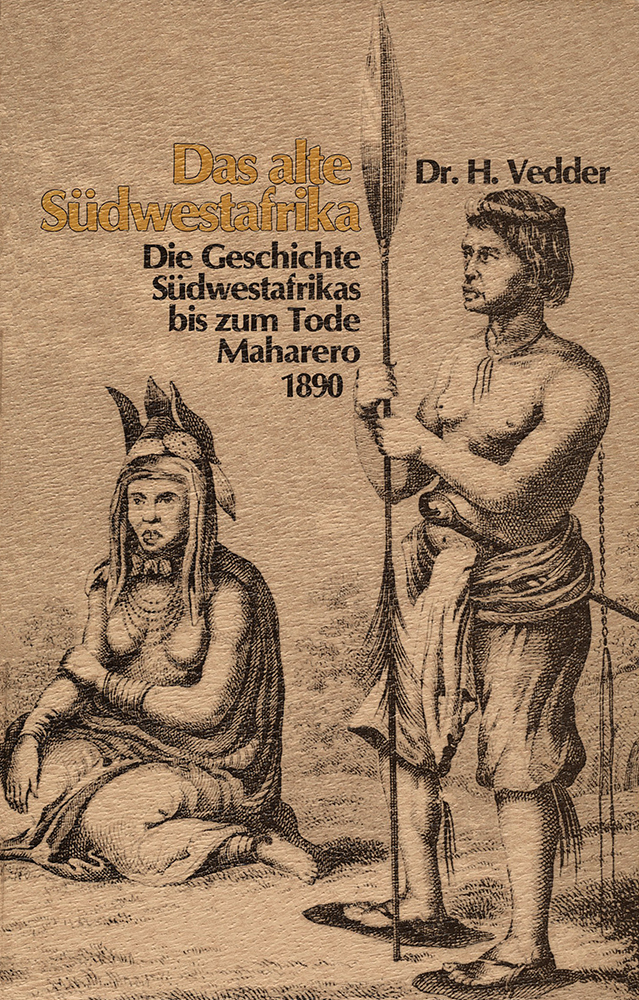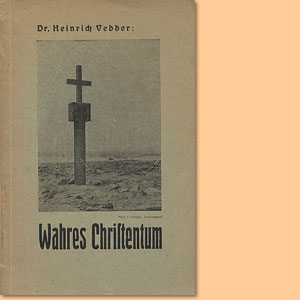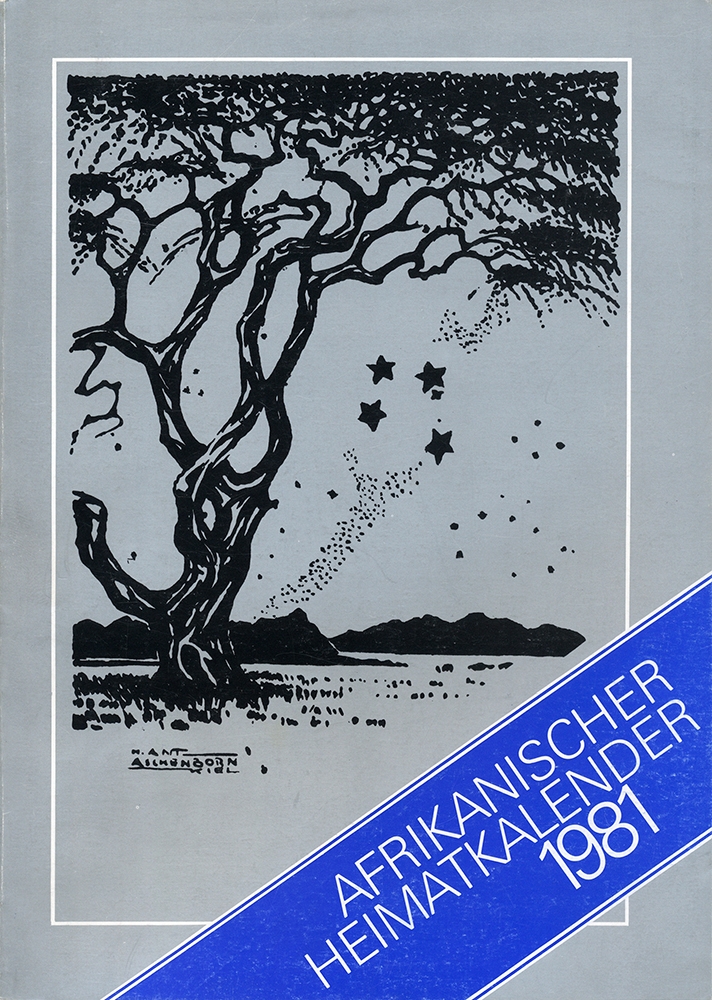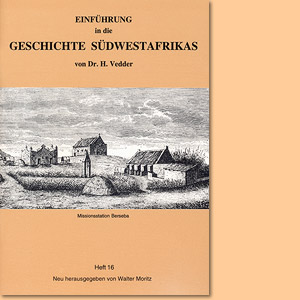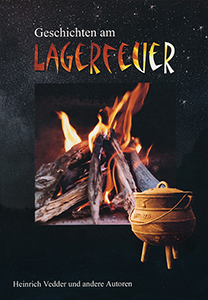South West Africa in early times, by Heinrich Vedder
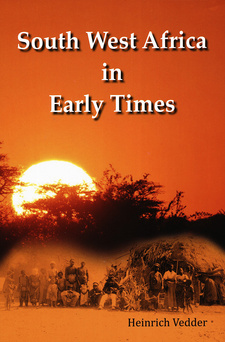
South West Africa in early times. Being the story of South West Africa up to the date of Maharero's death in 1890. Namibia Scientific Society. Windhoek, Namibia 2016. ISBN 9789994576425 / ISBN 978-99945-76-42-5
Heinrich Vedder's South West Africa in Early Times was originally published in German under the title Das alte Südwestafrika and its sub-title stated that it was a history of South West Africa up to the date of Maharero's death in 1890.
THE HERERO WAR OF FREEDOM AND THE ORLAM WAR
1. THE HERERO WAR OF FREEDOM
BEFORE we begin to describe the events of the two wars, which turned the whole of South West Africa, from 1863 to 1870, into a theatre of war, it is desirable to make some acquaintance with the people who played a leading part in those wars.
The Herero leaders
Zeraua had been able to stay at Otjimbingwe under the protection of the mission and the copper mines. Tjiseseta, one of Zeraua's relations, was living in the veld of Omaruru. Mbandjou, who was related to Tjiseseta, lived sometimes in the Kaokoveld, and sometimes in the veld to the east of Omaruru. Ndjiharine, who subsequently became the chief of Omburo near Omaruru, belonged to the same family. These were the family ties between the Herero chiefs of the west, who recognized Zeraua of Otjimbingwe, not as a paramount chief, but as an influential man to whom one could turn for help in times of need, especially as he was on very good terms with the Europeans at Otjimbingwe. Alongside this family bond there existed a second one, which was grouped around Tjamuaha and Maharero. The principal members of this were Kambazembi, who had come in from the Kaokoveld after Tjamuaha's death and taken possession of the country round the Waterberg, Mun-gunda, of whose death we read previously, Kahitjene, whom Jonker persecuted and Mungunda's sons killed, and many others. Now Maharero's mother, Otjoruzumo, Tjamuaha's principal wife, was Kambazembi's sister, and Kambazembi's mother was the daughter of Tjirue, Maharero's grandfather. Then Kambazembi married Ndomo, Maharero's sister, and Maharero, again, took Katundure, Kambazembi's sister, as an additional wife. The chiefs' family circle was completed owing to the fact that Maharero's mother, Otjoruzumo, was a younger sister of the principal wife of Zeraua at Otjimbingwe. In this way all the Herero chiefs were related to each other, and Maharero saw to it that the bonds were strengthened by numerous additional marriages, and that, in this way, any chiefs who had been outside the circle were drawn into it. (On the 26th December, 1863, Maharero took his ninth wife, and in his later years he had more than sixty.) The eastern Hereros, the Mbanderus, did not belong to this circle, for the Hereros and Mbanderus never intermarried. Their most prominent chief was Kahimemua. The Hereros under Nicodemus, who was the son of Kavikunua, the son of Tjamuaha, must be distinguished from the Mbanderus. This is important for the sake of the history of a later period, in connexion with the execution of the chiefs of both these tribes under martial law at Okahandja in 1896. Amongst Maharero's near relations were Hirarapi, his eldest brother, who was killed at the battle of Otjimbingwe in 1863, and his brother Kavikunua, Nicodemus's father, who ruled such of the eastern Hereros as were not Mbanderus. Maharero had a half-brother named Riarua, who was a man of parts, and became the leader of his army. He was the son of Otjipeze, one of Tjamuaha's later wives, and a sister of Otjoruzumo, who is mentioned above. Another of Tjamuaha's sons, who became of considerable importance later, was Kavezeri. One can see how close the ties of relationship between all the important Hereros were in 1862. mysterious power inherited from his ancestors, of being able to kindle and tend a true ancestral fire. [...]
This is an excerpt from South West Africa in early times, by Heinrich Vedder.
Title: South West Africa in early times
Subtitle: Being the story of South West Africa up to the date of Maharero's death in 1890
Author: Heinrich Vedder
Translation, editing: Cyril G. Hall
Publisher: Namibia Scientific Society
Windhoek, Namibia 2016
ISBN 9789994576425 / ISBN 978-99945-76-42-5
Softcover, 15 x 21 cm, 530 pages, numerous historical photos, 1 fold-up map of South West Africa
Vedder, Heinrich im Namibiana-Buchangebot
South West Africa in early times
South West Africa in Early Times: Being the story of South West Africa up to the date of Maharero's death in 1890.
Kurze Geschichten aus einem langen Leben, erzählt von Dr. H. Vedder, Missionar
Kurze Geschichten,Leben,Vedder,Missionar
Am Lagerfeuer der Andern. Von Land und Leuten in Südwestafrika
Ein seltener Klassiker: Am Lagerfeuer der Andern. Von Land und Leuten in Südwestafrika und was man von Menschen und Dingen sonst noch am Lagerfeuer zu erzählen pflegt.
Am Lagerfeuer. Geschichten aus Busch und Werft, von Pad und Landschaft, Menschen und Schicksalen in Südwestafrika
'Am Lagerfeuer' ist ein Südwestafrika-Klassiker: Geschichten aus Busch und Werft, von Pad und Landschaft, Menschen und Schicksalen.
South West Africa in Early Times
South West Africa in Early Times being the story of South West Africa up to the date of Maharero's death in 1890.
Afrikanischer Heimatkalender 1932
Dies ist die dritte Ausgabe Afrikanischer Heimatkalender aus dem Jahr 1932.
Die voorgeskiedenis von Suidwes-Afrika
Die bekende boek von Heinrich Vedder, Die voorgeskiedenis von Suidwes-Afrika, vertel oor die gebeurtenisse in Suidwes tot aan die dood van Maharero in 1890.
Das alte Südwestafrika
Lange Zeit war Heinrich Vedders Werk Das alte Südwestafrika: Südwestafrikas Geschichte bis zum Tode Mahareros 1890, ein Standardwerk der Geschichte der ehemaligen deutschen Kolonie.
Die Bergdama
Diese völkerkundiche Monographie über die Bergdama im Südwestafrika der 1920er Jahre gilt als ein Klassiker der Ethnografie Afrikas.
Wahres Christentum. Sechs Reden von Dr. Heinrich Vedder in Okahandja, Südwestafrika
Dieses seltene Büchlein enthält sechs Reden von Heinrich Vedder, die er in Okahandja, Südwestafrika zum Thema Wahres Christentum gehalten hat.
Afrikanischer Heimatkalender 1981
Dies ist der 51. Jahrgang Afrikanischer Heimatkalender für das Jahr 1981.
Einführung in die Geschichte Südwestafrikas von Heinrich Vedder
Dies ist eine Neuauflage von: Einführung in die Geschichte Südwestafrikas von Heinrich Vedder.
Geschichten am Lagerfeuer
Stimmungsvolle Geschichten am Lagerfeuer über Land und Leute, Sitten und Gebräuchen, Pflanzen und Tieren im alten Südwestafrika.

